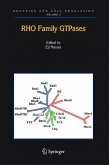During the last 40 years, the study of the biological basis of aging has progressed tremendously, and it has now become an independent and respectable field of study and research. The essential cause of aging is molecular damage that slowly overwhelms cellular and organismic defense, repair and maintenance systems. In recent years, a wealth of highly sophisticated research has transformed this idea from a credible hypothesis not only to a major theory, but essentially to accepted knowledge. Aging at the Molecular Level examines the key elements in this transformation.
Bringing together contributions from an international team of authors, this volume will be of interest to graduates and postgraduates in the fields of medicine and nursing, researchers of different aspects of biogerontology and those in the pharmaceutical, cosmeceutical, nutraceutical and health-care industry.
Hinweis: Dieser Artikel kann nur an eine deutsche Lieferadresse ausgeliefert werden.
Bringing together contributions from an international team of authors, this volume will be of interest to graduates and postgraduates in the fields of medicine and nursing, researchers of different aspects of biogerontology and those in the pharmaceutical, cosmeceutical, nutraceutical and health-care industry.
Hinweis: Dieser Artikel kann nur an eine deutsche Lieferadresse ausgeliefert werden.
From the reviews:
"This volume is the first in a series of five in which the biology of ageing will be explored. ... Altogether, this is a fairly comprehensive coverage of the current themes at the molecular level, with the further areas to be explored being well highlighted. The chapters are well-referenced and this timely text will be especially useful to those workers entering the field." (P.B.Gahan, Cell Biochemistry & Function, Vol. 23 (5), 2005)
"This volume is the first in a series of five in which the biology of ageing will be explored. ... Altogether, this is a fairly comprehensive coverage of the current themes at the molecular level, with the further areas to be explored being well highlighted. The chapters are well-referenced and this timely text will be especially useful to those workers entering the field." (P.B.Gahan, Cell Biochemistry & Function, Vol. 23 (5), 2005)








